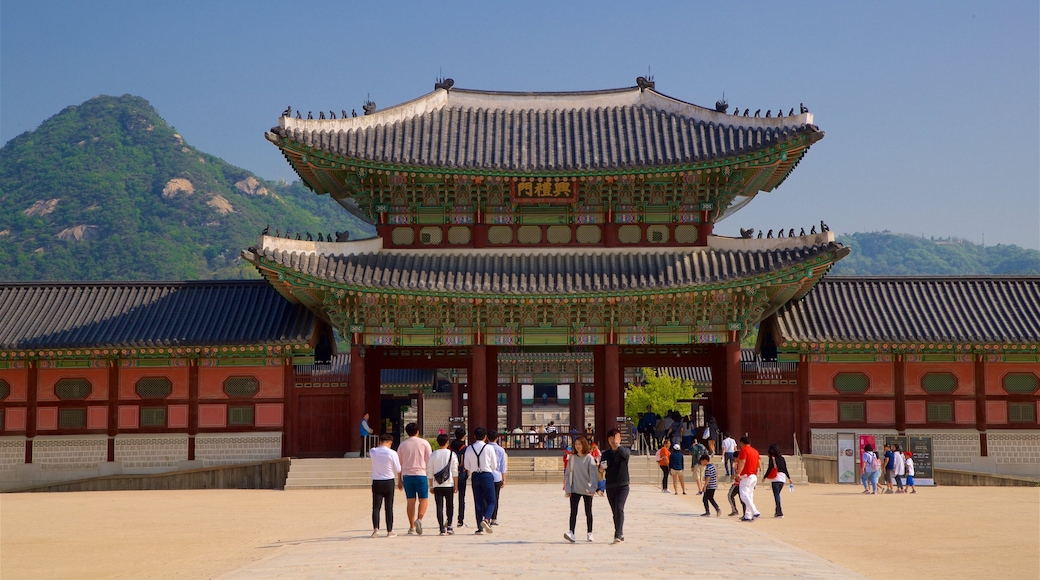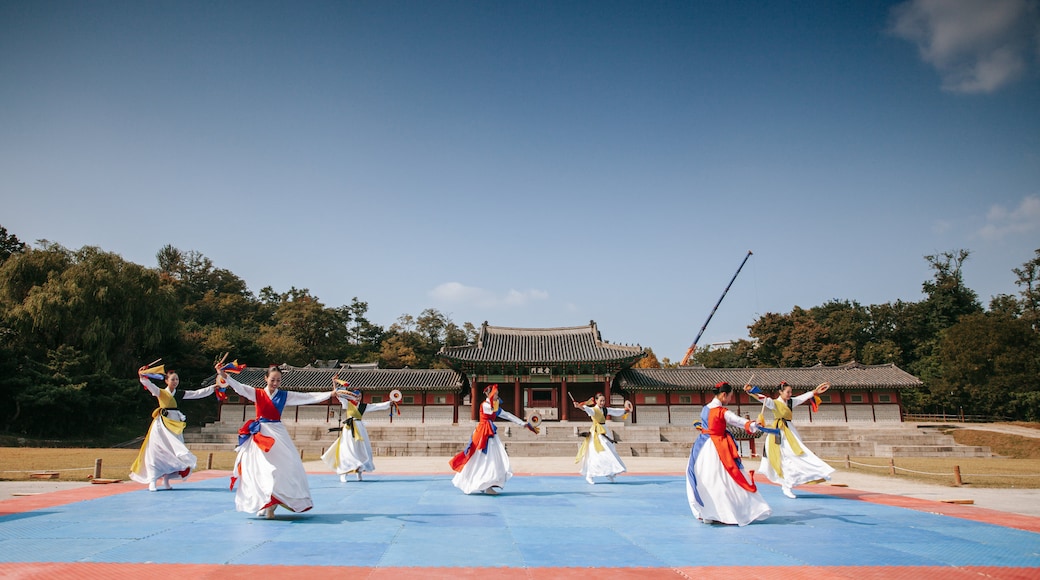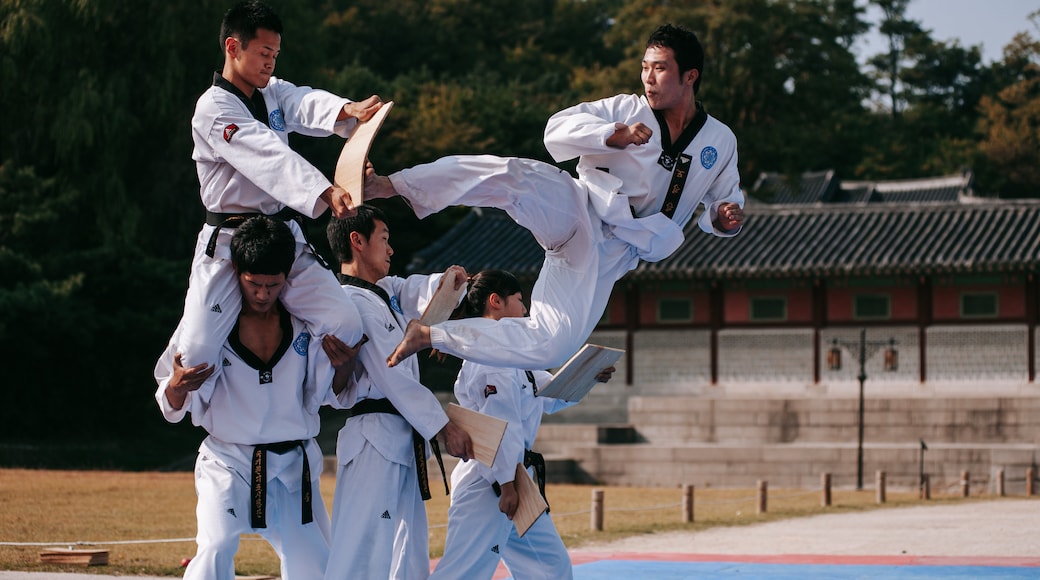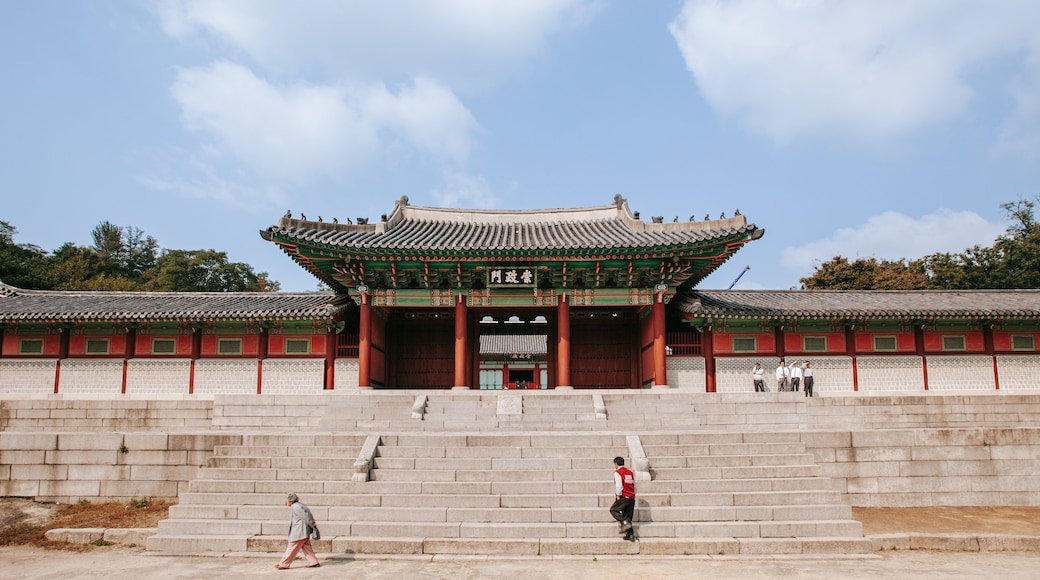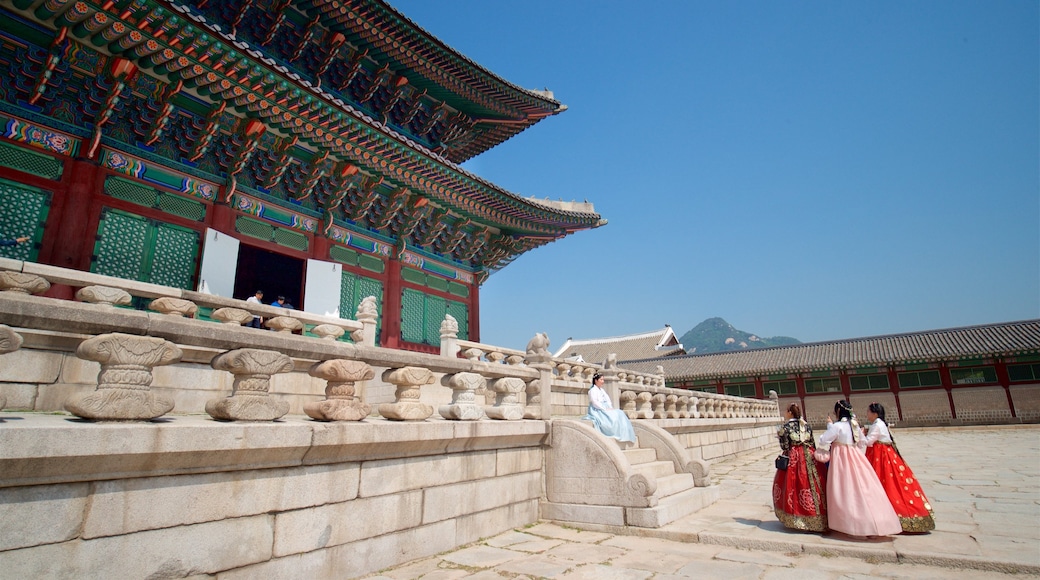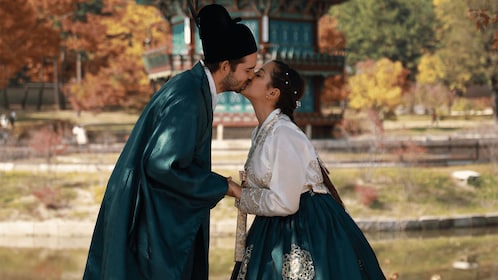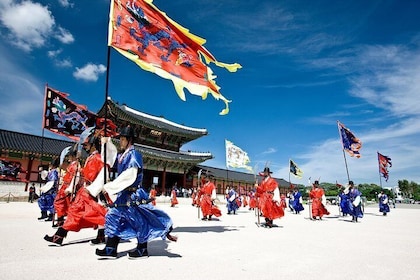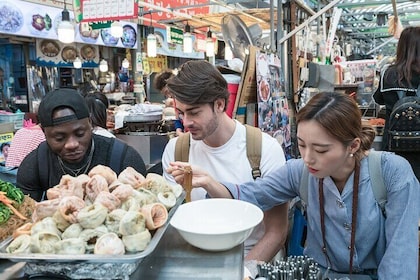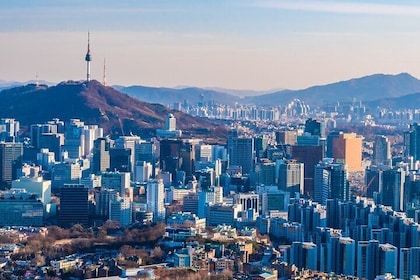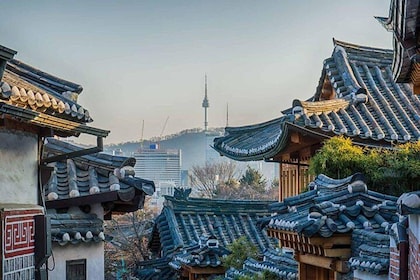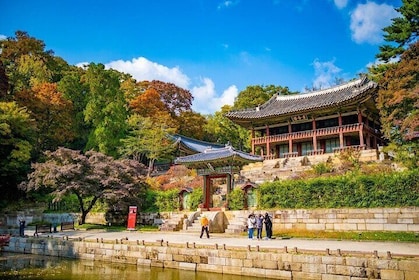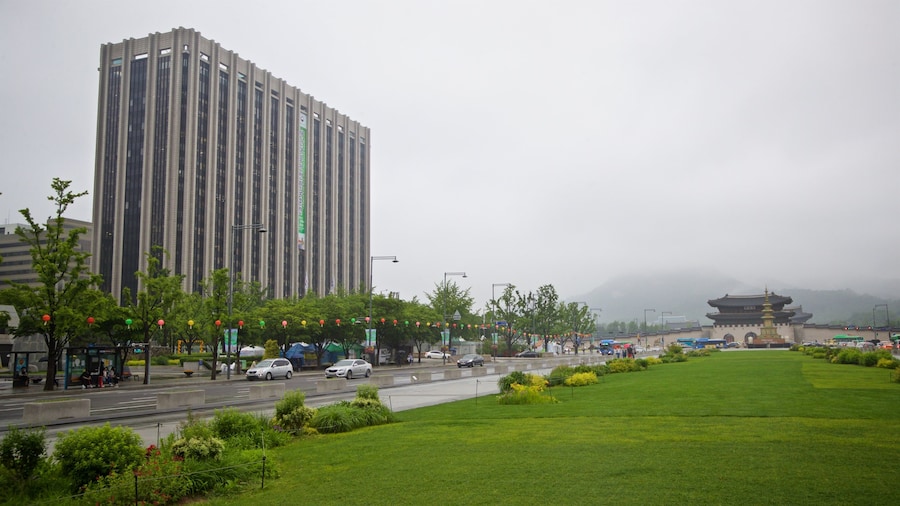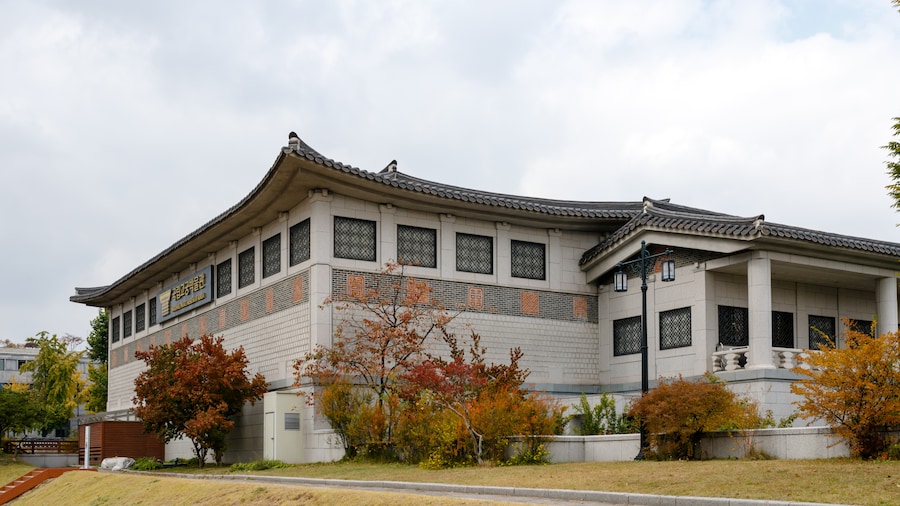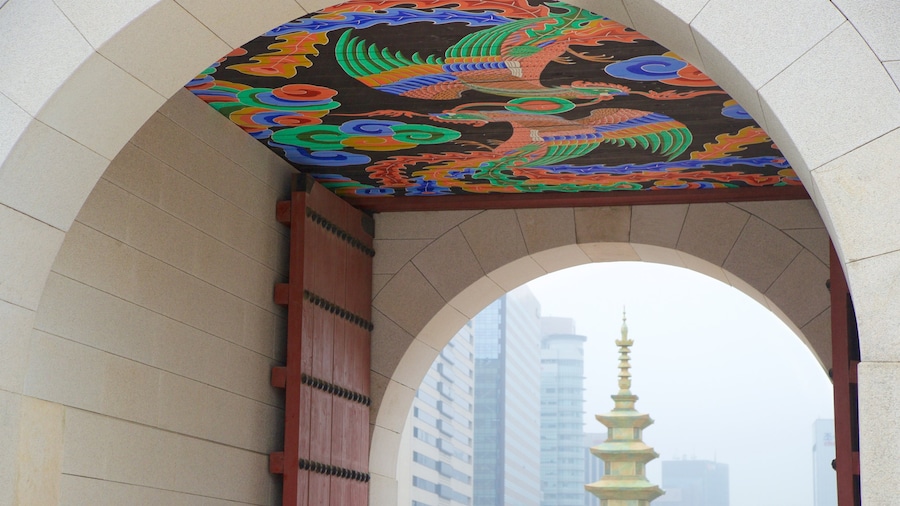Seoul is a relatively modern city, but Gyeongbok Palace is one of the exceptions. The palace was originally built in 1395 and, as home to the Joseon Dynasty, was one of the most important places in the country. Today, almost half of it has been restored to its former glory and serves as an example of traditional Korean culture.
The complex has been through hard times. It was first destroyed during Japanese invasion in the late 16th century, and demolished by the Empire of Japan again in the 20th century. Work is still ongoing to restore the 300 or so buildings that made up the original palace.
Gwanghwamun is the complex’s main gate to the south, and where most visitors enter from. It’s also where you can catch the changing of the guard, which happens hourly throughout the day. Other highlights of the palace complex include Gangnyeongjeon Hall (where the kings once lived), the Royal Banquet Hall, and the picturesque Hyangwonjeong, one of the only surviving 19th-century structures.
You’ll need at least an hour to stroll the palace grounds. Learn about Gyeongbok in depth on one of the free guided tours, which depart from the information office inside Heungnyemun Gate a few times a day. Learn more about Korean history at the National Palace Museum to the south of Heungnyemun Gate, and the National Folk Museum, which is in Hyangwonjeong itself. Both museums contain extensive collections of Korean artifacts and cater to English speakers.
A short stroll to the north of Gyeongbok Palace brings you to South Korea’s current seat of power, the Blue House. This is where the head of state resides. Though you’ll need to book well in advance for a tour, the exterior alone is worth seeing. The traditional-style blue-tiled pavilions and mountainous backdrop make for a superb photo opportunity.
Gyeongbok Palace is best reached from the Gyeongbokgung or Gwanghwamun subway stations. The palace complex is open every day, except Tuesdays. Consider buying an integrated ticket, which includes access to three other Grand Palace complexes and the Jongmyo Shrine.
